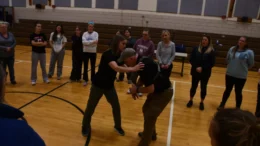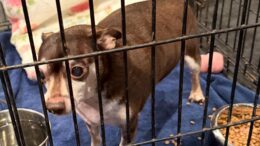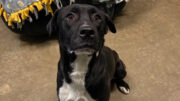Many people think all the birds fly south for the winter. They might be very surprised to learn just how many birds live in our area all year round. Some birds even come to our area in the winter, then spend warmer months further north. Like all other living creatures, their survival requires food, water and shelter. Even if you live on a small suburban lot, there is still quite a bit you can do to help the birds make it through the winter, and encourage them to stick around your yard.
Ways to help winter birds
1. Leave leaf litter lie on the floor of your gardens
Most overwintering songbirds spend much of their time foraging through the leaf litter on the floor of your garden looking for the tiny insects and insect eggs that will sustain them throughout the long cold. If you painstakingly clean every leaf off your garden in the fall, you are destroying the birds’ main food source.
2. Provide thick growth
Birds take shelter in the protective boughs of evergreens or within any shrubs that provide thick growth. Juncos and tree sparrows often take shelter on the ground under the warm boughs. They especially appreciate a stand of several evergreens massed together.
3. Clean your birdhouses then leave them up for the winter
Many birds take shelter from the wind in an empty birdhouse. Chickadees and downy woodpeckers especially enjoy enclosed cavities. Clean out your bird houses of any old nesting material at the end of the summer. To help prevent disease and possible parasite infestation, wipe them down or spray them with a ten percent Clorox solution.
4. Provide native plants with edible fruit, berries and seeds
Most native perennials provide seed heads which birds eat throughout the winter. Rudbeckia, coneflowers, Salvia, Coreopsis, sunflowers and most daisy-like flowers are some of their favorites. Also, asters, ironweed, goldenrod, mountain mint and many grasses provide needed food for the birds. Sure, you may want to deadhead some of these for prolonged blooms throughout the summer, but starting in late summer, let the seed heads stand.
Native hollies, Viburnum, beautyberry, spicebush, chokecherry, and Virginia creeper do their part by providing berries for hungry birds throughout the winter. In shopping for some of these shrubs, always look for the natives. Most have non-native cousins that the birds will ignore. Any well-informed nursery person should be able to help you in selecting the native. If he doesn’t know, ask to speak to the manager, or shop a different nursery.
Some trees that provide fruit that birds love include American crabapples, serviceberry, mulberry, eastern red cedar, and dogwood. If you enjoy seeing songbirds in your garden, make it a late New Year’s Resolution to add some of these plants to your property in the spring.
5. Keep bird feeders filled
This is the time of year when bird feeders are really appreciated. They will probably need to be refilled every day. It’s important for the feeders to be close to shelter where small birds can quickly find refuge from predators, however, not so close that a cat can hide within the thick branches then jump out to grab the unsuspecting bird.
Keep in mind that different bird species have different feeding requirements. Some prefer a hanging feeder while others require a tray feeder. The base of a tray feeder should be screened to allow water to pass through so seed does not get mildewed and rot.
I hang three feeders on the rail of my deck just off the sunroom so we can enjoy watching the birds. One holds a sunflower seed mix, one has unsalted, unshelled peanuts, and one has suet. Suet is especially important in cold weather because it supplies fat for warmth.
Woodpeckers, Flickers, and Nuthatches love the unsalted peanuts. Please note that bread is junk food for birds.
6. Provide drinkable water
One of the most important things is providing water. Birds need drinkable water which is often difficult to find in icy weather. I use a birdbath heater which has worked well for many winters. It prevents the water from freezing, even on the very coldest days. The bath is a very busy place!
All these suggestions not only help our bird friends, but provide us with entertainment on long winter days. Obviously, planting native trees and shrubs is not something you can do today, but investing in a feeder, suet holder, birdbath heater, or birdhouse is something you could do immediately. Then plan ahead to invest in at least one native tree or shrub to add to your landscape in the spring.
This educational blog is a series of informative articles from the Penn State Master Gardeners volunteers plus news concerning the group and their activities. For more information, click here.






































